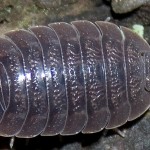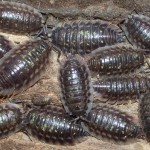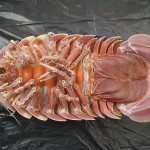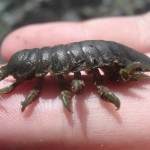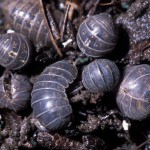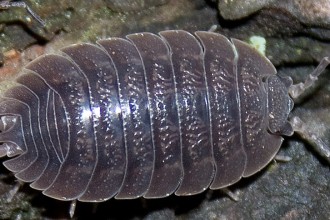7 Pictures Of Isopod
Sponsored link:
The Isopoda particularly 7 Pictures Of Isopod are small shellfishes with 7 sets of legs that vary in dimension from 300 micrometres (Microcerberidae) to almost 50 centimetres (Bathynomus). Their name, meanings that "like-foot" or comparable (iso) and also foot (sheath), most likely originates from the very early zoologists' understanding with the typical terrestrial "slaters" or "woodlice" (various other names: cloportes, pissebedden, pillbugs, roly-polies, sowbugs). The isopods vary, with around 10,289 types found in all ecosystems from the deepest oceans to the montane terrestrial habitats and deep underground in caverns or aquifers. Isopods are considered dorsoventrally squashed, as in the typical terrestrial slater, and indeed many types suit this morphological stereotype. Isopods from the deep sea and also groundwater habitats and also parasitical taxa may leave considerably from this typical physical body plan.
The isopods come from the widely known crustacean team, the Malacostraca, that includes acquainted shellfishes like shrimp, crabs, seafoods and also krill. Unlike these malacostracans with an obvious carapace, the isopods lack one. The isopods come from the Superorder Peracarida, which includes a diverse array of shrimp-like taxa that all family their youthful in a bag in between their legs. Isopods are unique amongst these crustaceans for many factors. Because they do not have a carapace, the gills, which are covered by the carapace in various other teams, are missing, so they take a breath using specialised lamellar gill-like pleopods ("swimming limbs") on the posterior area of the physical body. In many terrestrial isopods, the pleopods birth respiratory structures just like lungs. Inside, the heart is placed in the posterior area of the thorax to provide increased flow for the gills. Unlike all various other shellfishes, the isopods lost their follicle (a procedure called ecdysis) in two steps: "biphasic molting".
This site has the following aims:
to provide a catalogue of the world's isopod species
to promote stability in isopod nomenclature
to act as a device for greater taxonomic modifications and also local essays
to provide a base web link for various other on the internet data sources that utilize isopod classification
To provide adequate professional knowledge for maintaining the listing, we have formed an editorial committee to whom the inquiries on particular taxa should be addressed.
Feel free to download the Photographs under 7 Pictures Of Isopod articles for free. Suport us by sharing this Photographs to your friends.
912 x 484 330 x 220 728 x 386 150 x 150
Download HereSponsored link:

